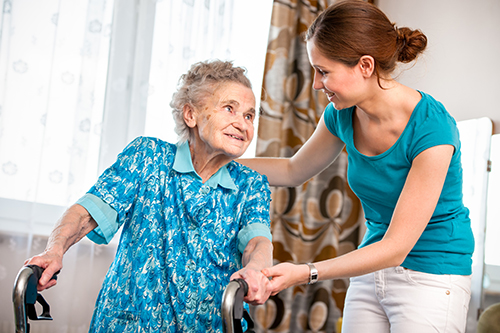 May 18, 2016
May 18, 2016
Creating a positive and collaborative relationship between patient and caregiver will ensure the best outcome for the senior, and it’s easier than you might think
Caregivers are a special breed. Those who are truly committed to their craft will provide compassionate and caring support for those in need, and they’ll do it with a smile on their face. That said, activities can be tough, tempers can ignite, and most caregivers will have to come to terms with the mortality of many of their patients each year. It isn’t an easy job, but being a caregiver is also incredibly rewarding – and it can be a real life-saver when the caregiver/patient relationship is built upon mutual trust and a sense of compassion. Here are four fundamental building blocks to creating a mutually-beneficial relationship with your patient:
Compassionate care: More than a simple buzzword, compassion should be the cornerstone of your caregiver/patient relationship. When you’re working with a patient who is suffering from a severe physical or cognitive impairment, keep in mind that it is normal to feel a sense of frustration when normal communication is difficult to achieve. By acting compassionately, you’ll discover how to communicate with your patient, and they’ll find it easier to place their safety in your hands.
Create trust: It is natural for a patient to ask as little as possible from a new caregiver. After all, it is in our nature to want to be self-reliant, and by asking for as little help as possible the senior may feel like they are holding onto whatever shred of independence they have left. Once you’ve created trust with your patient – meaning you respond when needed, you treat the patient with respect, and you demonstrate proficiency in your duties, you’ll find that it is easier for the client to ask for help.
Understand the patient’s likes and dislikes: Even though the patient now requires the support of a caregiver to safely manage day to day routines, there is no reason why this should discount the likes and dislikes of the patient. If the client has always enjoyed completing crossword puzzles, then bring a stack of them with you and create a fun activity around these games. Or, if they enjoy reading but no longer can due to poor eyesight, consider bringing an audio-book of their favorite novel to provide hours of entertainment. You’ll see a positive impact when you understand the preferences of the client.
Respect the patient: Caregivers are automatically placed in a position of authority in relation to the patient, as they must assert some control over the health, wellness, and safety of the client. But it is vital that the caregiver treat the patient’s home as a workplace – and continue to respect the patient, their home, their belongings, and their generally likes and dislikes throughout the duration of the caregiving schedule. Clients, even those with severe disabilities or injuries, can sense when they are being treated with respect.
Being a caregiver is hard work, and being a patient in need can be physically and mentally exhausting. But by creating a foundation of compassion, trust, interest, and respect, both parties will find that the caregiver/patient relationship is one that will only grow stronger over time.



